Chimpanzee groups have their own cultural traditions. Now, scientists have shown that chimp groups can transmit new behaviours to each other, by seeding new behaviours into a group and watching them spread.
For humans, our culture is a massive part of our identity, from the way we dress, speak and cook, to the social norms that govern how we interact with our peers. Our culture stems from our ability to pick up new behaviours through imitation, and we are so innately good at this that we often take it for granted.
 We now know that chimpanzees have a similar ability, and like us, different groups have their own distinct cultures and traditions.
We now know that chimpanzees have a similar ability, and like us, different groups have their own distinct cultures and traditions.
Now, Andrew Whiten from the University of St Andrews has published the first evidence that groups of chimpanzees can pick up new traditions from each other. In an experimental game of Chinese whispers, he seeded new behaviours in one group and saw that they readily spread to others.
Chimp cultures
Many animals have their own cultural traditions. Songbirds, for example, copy their parents’ melodies, and small variations lead to groups with different dialects. But chimpanzees have by far the richest cultures so far observed.
These scope of their culture first came to light in 1999, when Whiten, together with Jane Goodall and others, carefully documented at least 39 cultural behaviours among wild chimpanzees. Many of these were a matter of course in some populations, but completely absent in others.
Some groups use sticks to extract honey, others use them to retrieve marrow from bones, and yet others use them to fish for ants. Some get attention by rapping their knuckles on a branch, while others noisily rip leaves between their teeth. Some groups even have a rain dance.
Whiten has previously published three studies which demonstrated different sides of chimp cultural transmission. The first showed that trained individuals can spread seeded behaviours within a group. The second showed that cultures trickle through the generations as parents teach their children new behaviours. And the third showed that arbitrary conventions such as gestures and displays can spread as easily as skills involving tool use.
Now, together with an international team of researchers from the University of Texas and Yerkes National Primate Research Center, including primate expert Frans de Waal, Whiten has produced the first experimental evidence that cultural transmission can happen between different groups.
Seeding behaviours in groups
Whiten worked with six groups of captive chimps, each consisting of 8-11 individuals. They lived in large but separate enclosures arranged in two rows of three and each group could observe its neighbours, but not interact with them.
Whiten trained one chimp from groups one and four to solve two difficult tasks – the ‘probe task’ and the ‘turn-ip’ task – in order to get some food hidden inside a box. Each chimp was taught to use a different technique.
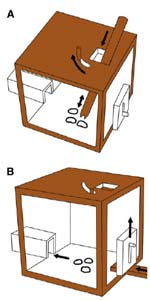 In the probe task, the chimp could move a lever at the top of the box to open a hatch, and use a stick to impale the food (A). Alternatively, it could use another lever at the side to lift an opening, giving it enough room to manoeuvre a stick inside and push the food out (B).
In the probe task, the chimp could move a lever at the top of the box to open a hatch, and use a stick to impale the food (A). Alternatively, it could use another lever at the side to lift an opening, giving it enough room to manoeuvre a stick inside and push the food out (B).
 In the turn-ip task (C), food items were dropped down a pipe, where they were blocked by a disc. The disc had a hole in it, that would allow the food to fall through when it was properly aligned. The chimps could turn the disc either by rotating an exposed edge or using a ratchet. Once the food dropped through, the chimps could get at it by pressing or sliding one of two different handles.
In the turn-ip task (C), food items were dropped down a pipe, where they were blocked by a disc. The disc had a hole in it, that would allow the food to fall through when it was properly aligned. The chimps could turn the disc either by rotating an exposed edge or using a ratchet. Once the food dropped through, the chimps could get at it by pressing or sliding one of two different handles.
Group transmission
Once the student chimps had mastered their new methods, they were returned to their respective compounds and the whole group was allowed to try its hand at the tasks. Before the training, none of the chimps managed to successfully get at the food. But after just one chimp was taught the technique, most of the others in the group quickly picked it up.
The boxes were then moved to a different position, where chimps from the second pair of groups could watch chimps from the first pair solving the task. After a time, it was moved to another position where the third pair of groups could watch the second one.
Whiten found that the techniques were accurately and quickly transmitted between the different chimpanzee groups. His experiment clearly shows that chimps have an immense capacity for learning new behaviours from their peers. They do this accurately and different groups can acquire and maintain several varied cultural traditions.
 In light of this evidence, the regional behaviour patterns seen in chimp groups across Africa are, without a doubt, the result of cultural transmission. In the wild, rival groups are often hostile towards each other and it is unlikely that chimps sit down in jungle conferences to share new ideas. But females do move between groups and Whiten believes that they carry new cultural traditions with them.
In light of this evidence, the regional behaviour patterns seen in chimp groups across Africa are, without a doubt, the result of cultural transmission. In the wild, rival groups are often hostile towards each other and it is unlikely that chimps sit down in jungle conferences to share new ideas. But females do move between groups and Whiten believes that they carry new cultural traditions with them.
How exactly the new behaviours spread is still a matter for debate. Some scientists have suggested that the chimps learn by ‘emulation’, meaning that they focus on the results of actions rather than the actions themselves. But other studies found that chimps don’t respond to ‘ghost’ lessons, where task machinery is operated by remote and not by another chimp.
The most likely explanation is that chimps imitate the actions of other chimps and are very good at learning from each other. In all likelihood, the common ancestor that we share with chimps had the same ability, and also had strong cultural streams running through its populations.
Find out more: If you’re interested in chimp intelligence and evolution, have a look at some of my previous posts on chimp gestures and the evolution of language, the chimp Stone Age and the evolution of tool use, and their use of tools for hunting.
Reference: Whiten, Spiteri, Horner, Bonnie, Lambeth, Schapiro & de Waal. 2007. Transmission of multiple traditions within and between chimpanzee groups. Current Biology 17: 1-6.
Images: Image of experimental apparatus taken from Cell Press.
Technorati Tags: chimpanzees, culture, chimp+cultures, cultural+transmission, animal+culture, Andrew+Whiten, Frans+de+Waal, Yerkes+Primate+Research
Filed under: Animal behaviour, Animal intelligence, Animal kingdom, Chimpanzees, Culture, Mammals, Mind and Brain, Primates | 1 Comment »
![]() The best communicators know to cater to their audiences, and cuttlefish are no different. A new study shows that these intelligent invertebrates can target their defensive signals to the hunting styles of different predators.
The best communicators know to cater to their audiences, and cuttlefish are no different. A new study shows that these intelligent invertebrates can target their defensive signals to the hunting styles of different predators.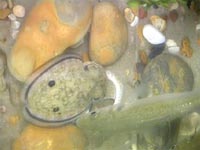 Cuttlefish and their relatives, the octopuses and squid, are expert communicators whose incredible skins can produce a massive range of colours and patterns. Cuttlefish mostly use these abilities to blend into the background but they can also startle and intimidate predators by rapidly changing the display on their dynamic skins.
Cuttlefish and their relatives, the octopuses and squid, are expert communicators whose incredible skins can produce a massive range of colours and patterns. Cuttlefish mostly use these abilities to blend into the background but they can also startle and intimidate predators by rapidly changing the display on their dynamic skins.






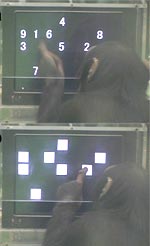 Sana Inoue and
Sana Inoue and  In this scenario, slacking wasn’t punished but merely reduced over time. But more complex creatures, like humans, have the capacity to actually recognise unfairness and
In this scenario, slacking wasn’t punished but merely reduced over time. But more complex creatures, like humans, have the capacity to actually recognise unfairness and 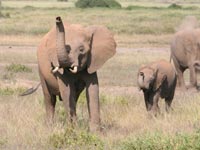
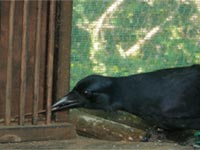
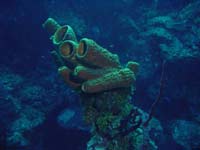
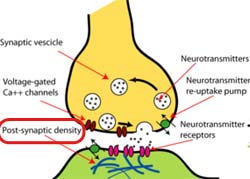
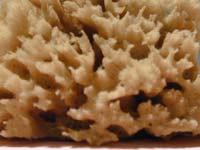





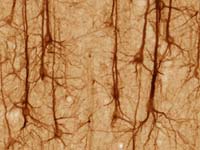

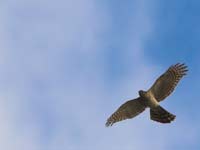
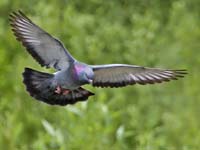
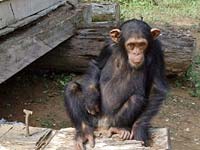
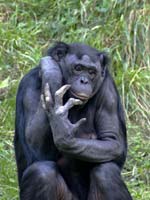
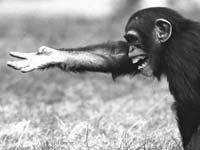



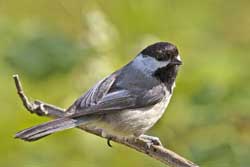 When this call sounds out, anywhere between 24 and 50 species of bird marshall together and mob the predator, robbing it of the element of surprise and harassing it from the area.
When this call sounds out, anywhere between 24 and 50 species of bird marshall together and mob the predator, robbing it of the element of surprise and harassing it from the area. They recorded two variants of the chick-a-dee call, by exposing the birds to two species of owl, one large and one small, in controlled encounters. They then played the calls back to red-breasted nuthatches – common flock-mates of chickadees – from a speaker hidden in a tree. As predicted, the nuthatches mobbed the speaker in response to both calls.
They recorded two variants of the chick-a-dee call, by exposing the birds to two species of owl, one large and one small, in controlled encounters. They then played the calls back to red-breasted nuthatches – common flock-mates of chickadees – from a speaker hidden in a tree. As predicted, the nuthatches mobbed the speaker in response to both calls.


